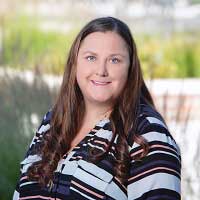Ask a Professor: The Practice Environment in Nevada
Find NP Schools
For the 2023-2024 academic year, we have 140 NP schools in our database and those that advertise with us are labeled “sponsor”. When you click on a sponsoring school or program, or fill out a form to request information from a sponsoring school, we may earn a commission. View our advertising disclosure for more details.
“Prior to full practice authority, we had NPs ready to serve these rural communities, but they were being hindered by the need for physician collaborative agreements. Full practice authority was a huge change.”
Megan Pratt, DNP, Associate Professor at the University of Nevada, Reno Orvis School of Nursing
America needs more primary care providers. With the nation’s largest generation advancing into old age, medical schools can’t graduate physicians quickly enough to meet the population’s increasingly complex needs. According to the Association of American Medical Colleges (AAMC), there could be a shortage of as many as 86,000 primary care physicians by 2036. But in many states, the gap is already acutely felt.
According to the Kaiser Family Foundation (KFF), Nevada has 75 primary care Health Professional Shortage Areas (HPSAs) that are home to over 1.2 million people. A 2021 United Health Foundation (UHF) report ranked Nevada 48 out of 50 for residents having access to a dedicated healthcare provider. The state’s unique geography can, in some ways, exacerbate these issues, and, as the fifth-fastest growing state in the nation, the situation may worsen further before it improves.
Fortunately, Nevada has a growing workforce of expertly-trained healthcare professionals who are well-equipped to help address the state’s unique needs: nurse practitioners.
Meet the Expert: Megan Pratt, DNP, APRN, FNP-BC, GS-C

Dr. Megan Pratt is an associate professor at the University of Nevada, Reno Orvis School of Nursing, where she is also program director of the family nurse practitioner and adult-gerontology primary care nurse practitioner programs. She earned her master’s degree as a family nurse practitioner from the University of Nevada, Las Vegas; her post-master’s certificate as a nurse educator from the University of Nevada, Reno; and her doctorate of nursing practice from Frontier Nursing University.
Dr. Pratt maintains a clinical practice providing cardiovascular care and risk reduction to Nevada first responders. She is also an active volunteer with Nevada Donor Network. She is a gerontological specialist. Through grant work and community and national initiatives, she is dedicated to improving care of older adults. She is actively involved with the Gerontological Advanced Practice Nurse Association (GAPNA), working as a mentor for the GAPNA Leadership Institute.
Dr. Pratt was interviewed for this feature in August 2022 and February 2024.
The Impact of Geography on Nevadan Healthcare Access
“We’ve always struggled with primary care provider shortages in Nevada,” Dr. Pratt says. “The US averages around 1,300 patients for every one primary care provider; in Nevada, it’s closer to 1,700 to one, which to the naked eye might not seem that bad, but then we have counties where it’s over 6,000 to one.”
These shortages are partially a result of Nevada’s unique geography. The state’s population is heavily clustered in three counties split between two isolated areas: the upper western region around Reno and Tahoe and the southern tip around Las Vegas. The state’s other 14 counties are much more sparsely populated, and their residents have limited healthcare access. This has led to some patients seeking treatment in other states: a primary care physician in Utah might be significantly closer than one in Nevada. But for other patients, that’s not possible.
“One-fourth of Nevadans receive Nevada Medicaid,” Dr. Pratt says. “They can’t go to California. They can’t go to Utah. That’s really challenging.”
NPs are particularly well-suited to helping address this issue. More than 85 percent of NPs are trained in primary care, and NPs are more likely than physicians to settle in rural areas. Across the nation, NPs represent one in four providers in rural areas, and in states with full practice authority—such as Nevada—the number is even higher.
“We have three counties where not one physician resides,” Dr. Pratt says. “But NPs are very driven to increase access to healthcare and lower healthcare costs. We have a lot of NPs working in these rural counties.”
The Benefits of Full Practice Authority
At the state level, full practice authority allows NPs to practice to the full extent of their training and education without any additional barriers. It grants no extra rights or privileges; it simply adopts the national consensus model for an NP’s scope of practice. Nevada passed full practice authority legislation in 2013, removing antiquated requirements that had previously acted as barriers to care.
“Prior to full practice authority, we had NPs ready to serve these rural communities, but they were being hindered by the need for physician collaborative agreements,” Dr. Pratt says. “Full practice authority was a huge change.”
Physician collaborative agreements are a common feature in states without full practice authority. In practice, these agreements have little to do with collaboration: they’re primarily paperwork signifying a token relationship, one with financial and logistical burdens for NPs. And, inversely, the removal of the need for physician collaborative agreements has not diminished collaboration between NPs, physicians, and other medical professionals.
“Nursing is always a team sport,” Dr. Pratt says. “When nurses advocate for full practice authority, it’s to ensure we can provide our patients with the care they need.”
Full practice authority in Nevada means NPs can practice independently, crucial to widening healthcare access in rural areas. It’s also lowering costs: more primary care providers lead to fewer hospitalizations. NPs are particularly adept at chronic disease management, and their holistic-centered approach to patient care improves patient outcomes.
Advocacy Issues for NPs in Nevada
“We often talk about NPs from a primary care standpoint, but NPs fill a huge void when we are looking at access to mental healthcare services as well,” Dr. Pratt says. “It’s worth highlighting the wonderful addition that a psychiatric mental health nurse practitioner (PMHNP) brings to a community as well.”
As poor as the statistics are for primary care access in the US, access to mental health services is generally worse in every category (and worse still in rural communities). Nevada is not immune from that trend: historically, the state has had an unusually high suicide rate; while it’s dropped in recent years, it still ranked as the 12th highest in the nation in 2022. Even in primary care settings, an NP’s simple mental health screening can save a life.
Dr. Pratt and other nurse educators advocate for more care providers to work with rural, marginalized, and underserved populations. That’s important in Nevada, which is not only a rapidly growing state but also an increasingly diverse one: according to the Census Bureau, it’s the third most diverse state in the country, behind only Hawaii and California. The Nevada State Board of Nursing agrees: all nurses in Nevada, including NPs, must fulfill a cultural competency requirement every two years.
The Future for Nevada’s NPs
The practice environment for Nevada’s NPs is continuing to evolve, and one of the primary displays of that evolution has been the mainstream adoption of telehealth. Accelerated into broader use during the Covid-19 pandemic, it’s likely to stay long after the pandemic subsides. This distance-agnostic care delivery mode could be what Nevada’s isolated counties need to start solving the healthcare access problem.
“I think telehealth is going to be part of our healthcare system indefinitely,” Dr. Pratt says. “But we still have areas of Nevada with no broadband internet connection. There’s a big push now to ensure all our communities have broadband so they can receive telehealth services.”
In many states, NPs themselves win important policy changes. State-level associations, such as the Nevada Advanced Practice Nurses Association (NAPNA), specialty-focused organizations, such as the Gerontological Advanced Practice Nurses Association (GAPNA), and national associations, such as the American Association of Nurse Practitioners (AANP), are all important ways for new and aspiring NPs to contribute to progressive collective action. They’re also important sources of ongoing education, which Dr. Pratt sees as crucial.
“The basis of healthcare and the basis of the nursing profession is that it is ever-changing, and you really need to be committed to being a lifelong learner,” Dr. Pratt says. “As long as our new graduate nurses look at ways to improve patient care, whatever changes they make will be positive. I think that’s exciting, and I’m excited for the future of nursing in Nevada.”
Update 2024: Looking Forward
In 2024, Nevada is continuing to see robust growth. An increasing number of people are moving to the state for jobs, retirement, and various other reasons. But Nevada is still struggling to keep up with the demand for primary care and mental health providers, especially in rural areas. The geography of Nevada hasn’t changed: urban areas remain far apart, with vast amounts of rural land in between. However, the state has been able to come to terms with some of the more detailed impacts of its diverse geography.
“One of the things that’s been a hot topic lately is the state of maternal care in our state,” Dr. Pratt says. “More than half of our Nevada counties have no hospital that provides routine labor and delivery care. That can lead to long travel times, high cost, or maybe even women forgoing care altogether.”
Nevada NPs have enjoyed good news over the last few years. Whereas they were once not reimbursed equally for Medicaid services, now they are. Broadband access has continued to spread, allowing for more telehealth services in more areas; the High Speed Nevada Initiative is seeking to extend those capabilities even further. And, to meet the needs of the state’s very diverse population, the cultural competency requirement of an NP’s continuing education has increased from two hours to four hours per renewal cycle.
While it’s resolved some of the problems of the past, Nevada is also looking forward to how to address the issues of the future. One aspect of that future is the increased importance of lithium mining. Lithium is an essential component in batteries, particularly those for electric vehicles; Nevada is home to the only operating lithium mines in the US. As new mines go operational, Nevada needs to find ways to accommodate the increased population those mines bring to areas that are already struggling with issues of access to both routine and emergency care.
“We need to be proactively thinking about how to be prepared for what’s coming,” Dr. Pratt says.
Nevada’s forward-thinking style directly results from its progressive approach to NP practice. With full practice authority secure, Nevada is not bogged down in debates over archaic legislative language or additional supervisory paperwork. Instead, it can continue to look ahead to the issues affecting their patients most.
“I do think that we are very lucky. in our state, to have the concept of interprofessional healthcare,” Dr. Pratt says. “It’s not a competition. It’s what’s best for our patients. A good medical team requires different disciplines, and, in Nevada, it feels like we’re all in the same boat, moving upstream. Everyone wants to make sure Nevadans have good healthcare.”

Matt Zbrog
WriterMatt Zbrog is a writer and researcher from Southern California, and he believes nurse practitioners (NP) are an indispensable component of America’s current and future healthcare workforce. Since 2018, he’s written extensively about the work and advocacy of NPs, with a particular focus on the rapid growth of specialization programs, residencies, fellowships, and professional organizations. As part of an ongoing series on state practice authority, he’s worked with NP leaders, educators, and advocates from across the country to elevate policy discussions that empower NPs. His articles have featured interviews with the leadership of the American Association of Nurse Practitioners (AANP), the National Association of Pediatric Nurse Practitioners (NAPNAP), and many other professional nursing associations.